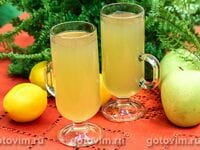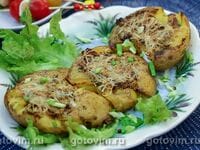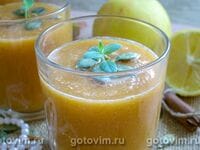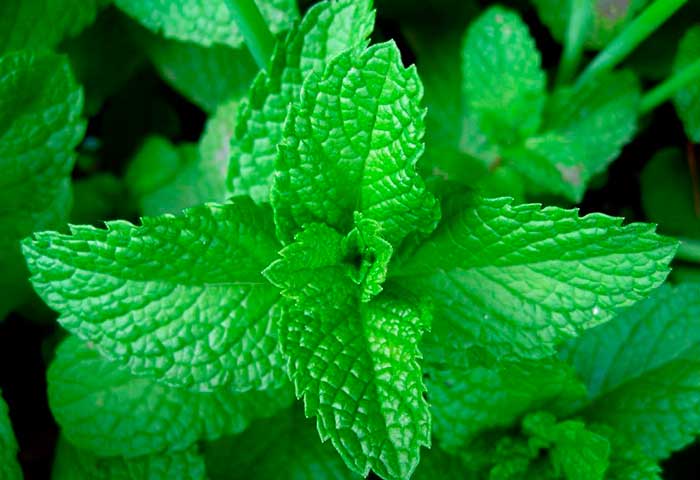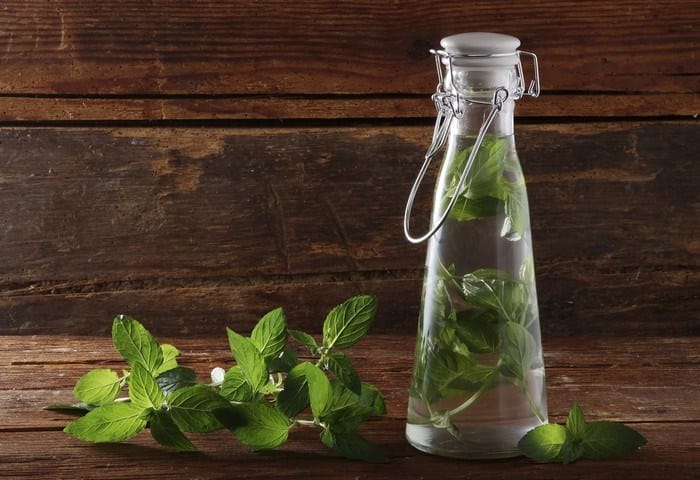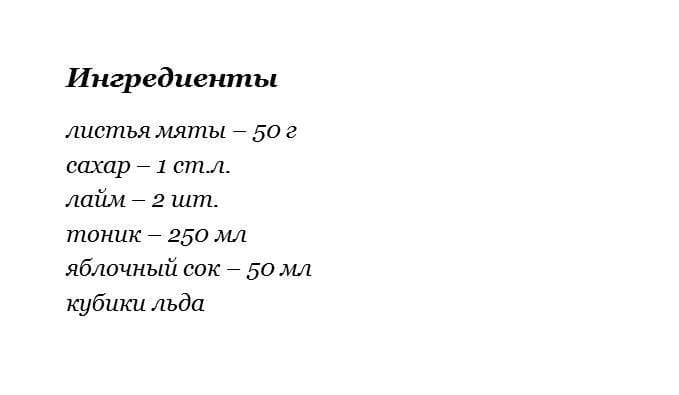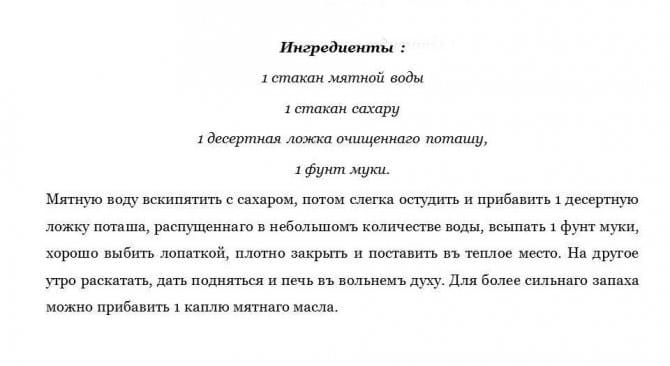Collection, preparation and storage of mint
Most of the essential oil is found in mint flowers, slightly less in the leaves, therefore, the best time to harvest mint is the time of flowering, which falls on July-August.
Like all other medicinal plants, mint is not harvested near roads, factories, landfills, etc. The mint sprigs must be cut along with the flowers; this is done in dry, sunny weather, when the dew has already dried on the grass. The twigs are not washed before drying, but if the plant is covered with dust, then it must be rinsed with a hose or at least from a watering can, and then dry well. If you dry the mint a little damp, the branches will become moldy and disappear. Cut mint stalks should be shaded to avoid volatilization of essential oils. If you need to dry mint with twigs, then collect the cut stems in a loose bunch, tie and hang with the inflorescences down. In this way, they dry under a canopy or in the attic, but always with good air circulation.
If you need to dry only mint leaves, cut them off at the very beginning of flowering (when the first buds appear). Next, lay out in a shaded place on clean paper or cloth and dry for several days, turning occasionally to prevent moisture from rotting. Store dried mint bundles in air-permeable canvas bags or cardboard boxes. Before storing the mint, peel the leaves off the twigs and put them in a glass jar with a lid. You can also grind dried mint into powder, but such mint quickly loses its flavor, so you need to use it quickly. Store mint in a dry, cool and dark place for no more than 2 years.
Properly dried mint does not lose color, retains all the beneficial properties and its unforgettable aroma.
Like any herb, mint should not be stored in plastic bags, as they do not allow air to pass through, which can choke the plant or become moldy.
Mint sugar
In summer, it is easy to make tea with mint or lemon balm – just brew the leaves of these fragrant herbs in a teapot. And what to do in winter when there is no fresh grass? There are several ways to save lemon balm or mint for the winter.
Hibiscus tea with pomegranate
The unusual combination of hibiscus tea with freshly squeezed pomegranate juice will remind you of sunny summer days somewhere on the coast of the warm sea. You don’t need to add sugar to cold pomegranate tea. This will help you to feel the whole range of tastes of the drink.
Sbiten Kolomensky with mint and St. John’s wort
A must-have ingredient in a sbitnya recipe is honey. We leave the choice of honey to you. We have the most common floral. But for the specific taste and aroma in this drink, in addition to the usual spices such as cinnamon, pepper and mint
Green tea with grapefruit and mint
Vitamin tonic drink made from green tea with mint will help to cheer up not only in the morning, but also at any time of the day. Try to clean the grapefruit pulp as much as possible from the white films so that the tea does not turn out to be too bitter. Fresh mint is fine
Moroccan tea
Moroccan tea is served both hot and cold. This option describes the preparation of a hot drink. Adjust the sweetness of the tea and the richness of the spices to your liking. But keep in mind that if the tea is infused for longer than 1-2 hours, the concentration
Apple sbiten
For this sbitn, in addition to the traditional set of spices, take a couple of sweet and sour apples. They will give the drink a pleasant fruity note, which you will definitely appreciate if you pour hot apple sbiten into glasses and have a sip.
Crumpled potatoes in the oven with cheese and garlic
If you do not know what to cook for a side dish, then here is a recipe for delicious potatoes in the oven. Firstly, it is very easy to cook it, although you will have to tinker with a little more than just potatoes in their uniforms.
Peppermint chemical composition
The medicinal properties of mint are due to its rich composition.
Mint contains:
- essential oil (up to 3% in mint leaves, 4-6% in inflorescences);
- vitamins: A, C, PP, B1, B2, B5, B6, B9
- macroelements and microelements: calcium, potassium, magnesium, sodium, phosphorus, iron, zinc, copper, manganese;
- flavonoids (vitamin P
- bitter and tannins;
- ursolic and oleanolic acids;
- gesperidin;
- betaine;
- sterols;
- azulenes;
- polyphenols;
- anthocyanins and leukoanthocyanins.
However, the medicinal benefits of peppermint are primarily due to its high menthol content. The amount of menthol in a plant can fluctuate depending on where it is grown and when it was harvested.
Mint – medicinal properties
The use of mint is advisable for the following diseases and pathological conditions:
- neurology: migraines and other headaches, insomnia, stress, anxiety, neuroses, chronic fatigue syndrome;
- cardiology: hypertension;
- otorhinolaryngology: colds, runny nose, pharyngitis, sore throat, bronchitis
- dentistry: caries, stomatitis, gingivitis, bad breath;
- gastroenterology: nausea, gastritis, flatulence, diarrhea, cholelithiasis;
- gynecology: menstrual pain, scanty or heavy menstruation.
Mint has the following beneficial properties:
- sedative;
- pain reliever;
- antiseptic;
- anti-inflammatory;
- antipyretic;
- immunostimulating;
- vasodilator;
- tonic;
- refreshing;
- normalizes the digestive system;
- enhances appetite;
- cleanses the liver;
- cooling;
- improves brain function;
- urine, bile and carminative;
- antioxidant.
Mint – contraindications and harm
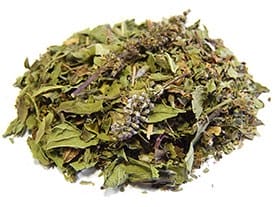 The benefits and medicinal properties of mint are numerous, but, unfortunately, there are a number of contraindications that you need to familiarize yourself with.
The benefits and medicinal properties of mint are numerous, but, unfortunately, there are a number of contraindications that you need to familiarize yourself with.
Contraindications to taking mint:
- arterial hypotension
- mint intolerance, tendency to allergies
- heartburn, increased acidity of the stomach;
- varicose veins (mint relaxes blood vessels);
- drowsiness;
- problems with conception or infertility;
- children under 3 years of age (menthol can depress respiration).
Peppermint oil is contraindicated during pregnancy and lactation, as well as in children under 6 years of age.
No need to get carried away with mint and young men, because it reduces libido.
Peppermint overdose
Symptoms of a peppermint overdose are:
- deterioration in sleep;
- heartache;
- spasms of the bronchi;
- breathing disorder.
Important! In case of signs of an overdose, you should immediately stop using mint and consult a doctor!
Recipes for using mint for medicinal purposes
Important! Before starting treatment with mint, be sure to consult your doctor!
Mint tea. 1 tbsp. pour a spoonful of dry crushed peppermint with 1 cup boiling water. Insist 10-15 minutes and you can drink. You can drink 1 glass of this tea during the day (in 3-4 or more receptions). For colds – up to 2 glasses of mint tea a day.
To make mint tea, you can also simply add a little mint to regular black or green tea.
Mint infusion. 0.5 tbsp. Pour mint spoons into an enamel bowl and pour 200 ml of hot boiled water. Cover and heat in a water bath for 15 minutes. Refrigerate for 30-40 minutes, strain and squeeze. Bring the volume of the infusion to 200 ml with boiled water. Take 1/3-½ cup warm 2-3 times a day 15 minutes before meals. Store in a cool place for no more than 2 days.
Mint decoction. Pour 15 g of dry crushed mint with 1 glass of water, boil for 10 minutes. Leave to stand for half an hour, strain. Take 1 tbsp. spoon 3-4 times a day 30 minutes before meals.
Alcoholic tincture of mint. Alcohol tincture of mint is prepared in a 1: 5 ratio. Take 20 g of dry mint and pour 100 ml of 75% alcohol or vodka. Insist 2 weeks in a dark place. Take 10-15 drops, 3-4 times a day.
Main characteristics of mint
Peppermint has become more widespread in nature, which is famous for its medicinal properties. This plant with elongated egg-shaped leaves is well known to Russians and residents of the CIS countries. Under comfortable living conditions, a perennial from the family of Yasnotkovy crops reaches up to a meter in height.
During the flowering period, an ear is formed at the very top of the plant, dotted with small flowers of a pink or pale purple hue. At this time, the plant emits a delicate, graceful aroma that is clearly felt even at a distance of several meters.
In the Middle East, mint is considered a symbol of hospitality, and the Greeks claim that this herb was especially revered by the Goddess Aphrodite. To this day, the plant is used to purify the air in temples and churches.
Spice plant composition
It should be noted that peppermint is used as a seasoning in cooking, and as a base ingredient for the preparation of medicinal compositions. Other varieties of this amazing plant are also actively used. Although for some positions the composition of each species is different, all varieties of mint are characterized by the presence of the following components:
- Vitamins. The composition is dominated by ascorbic acid, otherwise vitamin “C”. This component forms immunity, which is extremely important for the prevention of infections and other diseases. Vitamin P or rutin is also abundant.
- Mineral elements. This group of substances is necessary for the proper nutrition of tissues, and takes part in the synthesis processes.
- Essential oils, especially menthol, stimulate the outflow of bile and have an antiseptic effect.
- Resins perform antioxidant functions, cleansing the body of toxic products.
- Carotenes transport oxygen, and when they enter the body, they are converted into vitamin “A”.
- Tanning elements destroy pathogenic microflora, localize foci of inflammation, stop bleeding. It is these substances that impart astringency and a bitter taste to the product.
All these ingredients in the complex have a beneficial effect on the human body.
Considering that the fresh calorie content of mint is only 49 units, the spice plant will be useful for losing weight.
Healing properties of the plant
Even in ancient times, people noticed that the fragrant mint aroma has a positive effect on mood, tones, and gives vitality. Therefore, special drinks were prepared from the plant, the recipes of which are very popular today. Due to the content of the menthol component, mint has pronounced medicinal properties:
- spicy vegetation is a powerful antiseptic;
- mint effectively relieves painful sensations;
- the plant has diuretic properties;
- the herb stimulates the production and outflow of bile;
- its ability to dilate blood vessels improves blood circulation;
- being a natural aphrodisiac, the herb increases the sexual activity of women and men;
- antiviral properties help to resist colds;
- mint is often used as a natural expectorant for severe coughs.
Separately, it is worth noting the beneficial effect on the digestive system. It is known that dishes with mint increase appetite and improve intestinal motility.
Menthol has long been used in the pharmaceutical industry. This component is a part of nasal drops, Validol, anti-cold drugs – “Doctor Mom” lollipops and Pectusin cough syrup.
Uses of mint
The scope of application of mint is not limited to one area of medicine. The diverse range of possibilities of this unique plant is in demand in cosmetology, cooking and even in magical practices. Moreover, in each area a certain type of plant is used.
In medicine
Medicinal or peppermint is mainly used as an adjuvant. The herb is taken as a basis in a fresh and dried form for the preparation of infusions, decoctions, external agents. Such drugs are relevant in the treatment of:
- digestive disorders;
- flu and respiratory infections;
- inflammatory processes of the respiratory tract;
- diseases of the oral cavity;
- pathologies of the cardiovascular system;
- nervous disorders;
- skin diseases.
Scientists have proven that medicinal formulations made from peppermint can help combat the effects of stress and chronic fatigue. Especially effective is the essential extract when added to a bath or aromatic rounders. Such therapy also helps to normalize the nervous system and solve the problem of insomnia.
Peppermint essential oil is used externally for insect bites and muscle neuralgia.
If you add a few drops of ether to toothpaste, it will not only get rid of the unpleasant odor, but will help in the fight against tooth decay.
Cosmetology and perfumery
Aphrodite’s favorite herb is found in many skin care products, but the plant is especially actively used in the production of perfumery products. A pleasant aroma with delicate sensual notes harmoniously complements the composition of perfume and eau de toilette. Mint is added to hand creams, lipsticks, lotions. There is a separate line of cosmetics designed to treat skin problems.
Peppermint essential oil is used as a base for massage treatments. For example, anti-cellulite massage is very popular today, which is also carried out using this product.
Cooking
If peppermint is more suitable for medical purposes, then other varieties of the spicy plant are more often used in the culinary business. Let’s list those that have found the most widespread use in cooking around the world:
- Long-leaved mint – is actively used in the national cuisines of Eastern and European countries. Spicy herbs are used to season main dishes and desserts, added to pastries and drinks. This type of mint is commonly used in home canning.
- Curly mint – has a refreshing aroma, but does not have a cooling effect. It is usually used dried as an independent seasoning, and fresh leaves are added to salads and soups. This mint goes well with vegetables, meat, mushrooms, fish. It gives a unique aroma to tea. In the countries of Eastern Europe, as well as in Russia, curly mint is traditionally added when canning apples, cabbage and other vegetables.
- Apple mint is an integral part of the Caucasian cuisine. In Georgia, the herb is used to make sauces for lamb dishes, and in Armenia it is added to some types of cheese.
- Lemon mint – better known as melissa, is very popular in Arabic cuisine. True, this type of spice plant is also not uncommon on the table of European consumers. Finely chopped herbs are added to summer salads, and dried herbs are used in winter to saturate meat and vegetable dishes. The delicate aroma of lemon balm gives a special sound to dairy desserts, but a particularly harmonious combination is obtained in a duet with eggs and beans. In Moldovan cuisine, it is customary to add lemon balm to the filling for pies.
- Spicy mint is absolutely devoid of bitterness, which allows you to use fresh herbs as a vitamin supplement to salads. Powder concentrate obtained from dried leaves is used as an independent addition to main meat dishes. Minced meat, pates, sausages are seasoned.
Do not forget that in addition to taste, all of the listed types of mint have high aesthetic characteristics. Therefore, culinary experts from all over the world decorate their masterpieces with fresh leaves.
Is it possible to eat fresh mint
It is not only possible to eat mint in its raw form, but also necessary, given its beneficial properties. Mint leaves remove cholesterol from the body, have a positive effect on the circulatory system, heart, have a calming effect on the central nervous system, have antiviral and antibacterial effects. Mint should not be used only in one case, if there are contraindications, in other cases the herb will only have a positive effect on the body.
Peppermint can be a great help for those who want to lose excess weight. The calorie content of the herb is only 49 Kcal, but its key feature lies in the ability to suppress hunger. The effectiveness of the herb in weight loss has been proven by recent studies conducted by American scientists.
One way to use mint for weight loss is to add it to water. You can make a drink by pairing it with ginger, cucumber or lime.
How to use mint
Everyone knows that mint leaves can be added to tea. How else can you use this fragrant plant? There are so many ways to use mint that every gardener will find the best recipe for himself.
First, prepare the peppermint for the winter.
How to dry:
- For drying, cut off a third of the branches so that new shoots grow on the sides.
- It is better to harvest during flowering, when there are more nutrients in it, that is, at the end of June and continue until mid-August.
- If only the leaves are dried, they are harvested before the buds open.
- It is better to harvest in the evening or early in the morning, after the dew has dried.
- Collect the spicy plant in ecologically clean places.
- Close the collected twigs from the sun’s rays so that the essential oil does not evaporate.
- If the leaves are dusty, you can wash them a little and dry them with a paper towel.
- Spread the leaves in a thin layer, cover from the sun, hold for 4 hours.
- Finish drying until the raw material is brittle.
- You can use an oven or microwave, but the plant will lose some of the nutrients.
- A great way to dry is to tie in bunches and hang on the veranda, turning occasionally.
How to store?
Can be ground into powder or left as is. Whole bundles of mint are stored in cotton bags to allow air access. You can store it for up to 2 years, no more.
Fermentation of plants
Many gardeners have learned to ferment even mint.
Fermentation stages:
- Divide carefully selected raw materials into several bundles, fold into plastic bags, and tie tightly.
- Put in the freezer overnight, away from food, so that the mint does not absorb foreign odors.
- Frozen raw materials must be passed through a meat grinder or chopped with a knife.
- Put the resulting mass in a bowl, place a three-liter jar of water on top, hold for 3 hours.
- Spread the mass on a baking sheet or on a plastic board. It is not recommended to use a wooden surface.
- Leave the tray outdoors or in a well-ventilated area, so that the sun’s rays do not fall on the raw materials.
- After 2 days or less, put the dry tea leaves in canvas bags or small jars.
- Mint tea should be brewed for 4 minutes and then drunk.
Mint blanks
Very useful and tasty preparations are obtained from this plant.
Syrup
To obtain a vitamin syrup, you need 100 g of fresh mint leaves, 500 g of sand and a glass of water.
How to cook:
- Pour the chopped leaves with half a portion of granulated sugar, leave for 15-20 hours.
- Mix the rest of the sugar with water, boil for 20 minutes until thickened.
- Add sweet mint to a saucepan with boiling liquid (you can add a pinch of citric acid), turn off the heat.
- Let it brew for 3-4 hours.
- Grind with a blender, strain through 3-4 layers of cheesecloth.
- Boil the syrup again and put in jars.
Blanks for a fun holiday
Every family celebrates birthdays and various holidays throughout the year. In order not to buy alcoholic beverages, prepare them on the basis of a fragrant plant.
Liquor
Prepare an unusual liqueur to surprise your guests.
Ingredients:
- Fresh mint – 5-6 branches.
- Vodka, moonshine, alcohol (diluted) or cognac – 1 liter.
- Water – 1 glass.
- Sugar – 350 g.
Sequence:
- Put raw materials in a jar, pour alcohol, put in a dark place for 10-15 days.
- After 15 days, strain through a sieve.
- Dissolve sugar in boiling water, cook over low heat until thickened.
- Add cooled syrup to the tincture and mix.
- After a month, the liquor will be ready for use.
Kvass
For non-drinkers, brew should be prepared.
Ingredients:
- Mint stems with leaves – 300 g.
- Sugar – 3-4 tbsp. spoons.
- Water (boiling water) – 2 liters.
Cooking sequence:
- Put the raw materials in a 2-liter jar by 1/4 of the volume, cover with sugar, pour boiling water.
- Cover with gauze, hold for 3 days at room temperature.
- Then strain the kvass, refrigerate.
Wine
Having once prepared wine from mint, you will become a connoisseur and admirer of this drink.
Ingredients:
- mint leaves – 750 g
- raisins – 500 g
- lemons – 2-3 pcs.
- sugar – 1.2 kg
- water – 4.5 l
- yeast and tannin to taste
Cooking method:
- Place the leaves in an enamel pot, add the raisins and finely chopped lemon peel.
- Pour boiling water over, cover, leave for 3 days, stirring from time to time with a wooden spoon.
- Strain the wort through a cloth, pour into a glass jar.
- Add lemon juice, sugar, add yeast and tannin, cover, put in a warm place for 3 days to ferment the mixture.
- Pour the liquid into another container, let it ferment for a while.
- Then pour the wine into bottles, store in a cool place.
Limoncello is a strong liqueur with a bitter taste. It is made from lemon peel, granulated sugar, wine alcohol, water. This bright, tasty drink will perfectly warm you in winter and protect you from colds. The important thing is that it retains vitamin C.
The classic recipe: you need food alcohol with a strength of 96% or purified moonshine – 500 ml, sugar – 500 g, lemons – 10 pcs., Water – 650 ml.
See also: How to make an original salad with pineapple and ham
Preparation:
- Wash the lemons with a baking soda brush, then soak in hot water.
- Cut off the zest without white pulp, chop.
- Put in a jar, pour in with alcohol, close the lid, let it brew for 10 days, shaking daily.
- Then bring 650 ml of water to a boil, add sugar, boil again for 2 minutes.
- Combine the cooled syrup with the liquid where the zest was infused.
- Pour the resulting liquor into bottles and refrigerate for 7 days.
Vodka
Craftsmen are happy to share recipes for making mint vodka. The pleasant-tasting vodka is used not only for fun, but also for the treatment of colds.
Mint jam
There are a lot of recipes for mint jam. I will give here one of them, as it seems to me, the simplest. Ingredients: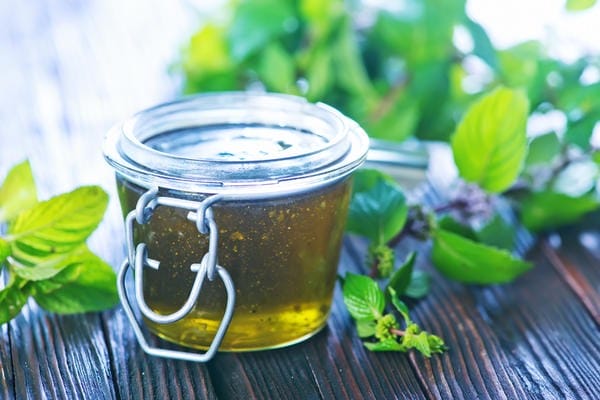
- Fresh mint leaves – 250 g.
- Lemons – 2 pcs.
- Water – 500 ml.
- Sugar – 1 kg.
Sequence of actions :
- Rinse the mint with cold water and pat dry (you can blot it with a paper towel).
- Finely chop the leaves and place in a saucepan in an even layer.
- Send lemons finely chopped together with the peel (pre-washed, of course) there.
- Pour everything over with water and cook for 10-12 minutes. Then turn off the gas, cover the pan with a lid and leave for 24 hours.
- After a day, strain the infusion through cheesecloth and squeeze out the liquid from the mint-lemon mass (discard the pomace).
- Add sugar and cook until thick.
- Pour into sterilized jars and close.
Everything =) The mint-lemon jam is ready. Some people add pectin and a few drops of green food coloring. To make it gelatinous like jelly and brighter in color. I have never tried this, but I really wanted to cook and taste something. I think I will deal with this in the near future.
Mouse mint

If your area is literally attacked by mice, if they gnaw on roses and other plants, you can try to scare them away with mint. Mice (as, indeed, all rodents) do not like pungent odors. So plant more peppermint! Its twigs can be scattered at the roots of plants, which are attacked by mice.
There are other ways as well. For example, you can take a piece of felt (at least cut off a felt boot), drop a few drops of mint extract on it (sold in any pharmacy), put it under the same roses and set it on fire. They say it is very effective.
Mint toothpaste
If you have peppermint oil, you can make your own toothpaste. Natural! In case you forgot to take one of the most important hygiene products to your dacha, that’s it. Ingredients :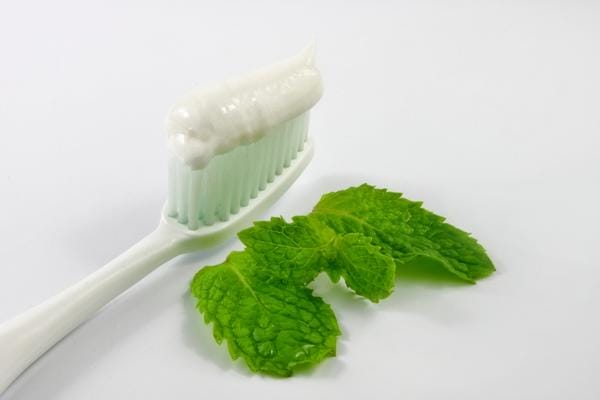
- Peppermint oil – 15 drops
- Soda – 6 tsp.
- Salt – 1/3 tsp.
- Glycerin – 4 tsp.
Sequence of actions :
- Mix all ingredients thoroughly until smooth.
- Check the taste. If slightly bitter, add a few drops of mint.
- Store the finished paste in a hermetically sealed jar, open only at the time of use
Mint air freshener
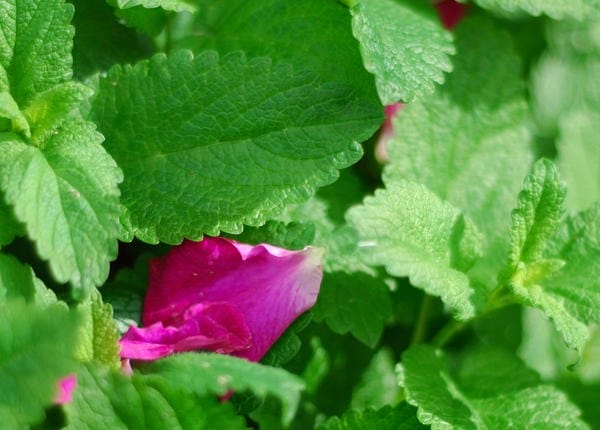
It doesn’t take a lot of effort to make a simple and cheap air freshener. Just take the petals of scented roses and other flowers, mix them with the mint leaves, and place these mixtures all over the room. The aroma will be excellent!
You can also make scented pads from mint and other plants for aromatherapy. It is good to hang them in the nursery: the child will be calmer, it will be easier to fall asleep, and this is useful for memory.
With the help of mint, you can freshen the carpet and, as a result, the air too. What is needed for this? Mix the mint petals with baking soda, scatter the mixture over the carpet, and vacuum after an hour. The room will become very fresh!
How to make fresh mint mint tea
The main benefit of mint is its soothing properties. In a stressful situation, you can simply brew a mug of mint tea. But how to make mint tea: brew fresh or dry leaves, add something else? There are many ways to make mint tea, but you can use the simplest one: choose a tea of your choice – green or black without any additives, and add a few leaves or sprigs of mint. For 1 liter of boiling water, add 3 teaspoons of tea and 1 large sprig of mint, let the tea infuse for 7-10 minutes.
How to make a non-alcoholic mojito
- Wash the mint, dry it, set aside a couple of leaves, and chop the rest, add sugar and crush.
- Pour the limes over with boiling water and wipe with a paper napkin. Cut one lime and squeeze out the juice, and cut the other into slices. Add lime juice to the mint and arrange the mixture in the glasses.
- Put lime mugs in each glass, pour in apple juice, add ice, tonic and decorate with mint leaves.
How to cook mint and what to eat mint with
Fresh mint can be cut into a salad, for example with fresh cucumbers, and seasoned with sour cream or yogurt sauce. Dried mint can be used as a seasoning for grilled meat or lamb, meatballs and kebabs.
Mint perfectly flavors the famous refreshing mint tea, as well as soft drinks and some marinades. Finally, the most aromatic variety of this plant, peppermint, is often found in confectionery recipes.
Mint gingerbread
1 kg = 2.441933 pounds, which means 1 pound equals approximately 410 grams. Potash is potassium carbonate that was used as a baking powder for heavy gingerbread in Russian cuisine. Today our stores sell more suitable baking powder that you can use according to the instructions on the package. Mint water probably means a decoction of mint leaves. Make sure to try this simple recipe in high season for mint.
Nutritional and medicinal value of mint
In the Middle Ages, mint was already known to healers for its soothing, pain-relieving and anesthetic properties. Peppermint is excellent for pain relief and can be used as an antiseptic, including the respiratory tract and digestive tract.
The Pennyroyal mint variety is used in folk medicine to fight stomach cramps and stimulate digestion. Nothing beats the infusion of mint and verbena after eating too much. It fights well against indigestion and heartburn.
In addition, mint in the form of inhalation is recommended for coughing and hoarseness, it will help in the fight against flu and colds.
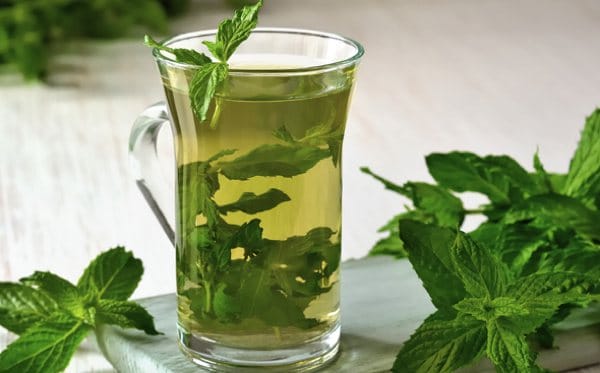
Finally, menthol in peppermint is often used as a mouthwash to freshen the breath.
Sources used and useful links on the topic: https://medicina.dobro-est.com/myata-lechebnyie-svoystva-primenenie-protivopokazaniya-i-retseptyi-iz-myatyi-perechnoy.html https://www.gotovim.ru /subject/with/myta.shtml https://povkusu.guru/myata-primenenie-i-sposob-prigotovleniya/ https://Vsespecii.ru/specii/myata/chto-mozhno-prigotovit-iz-myaty https: / /anisima.ru/retsepty-iz-myaty-v-domashnih-usloviyah/ https://profter.ru/napitki/chto-mozhno-sdelat-iz-myaty.html https://7dach.ru/recepty/Tatyana- sadovodniza / 7-sposobov-ispolzovaniya-myaty-33972.html
